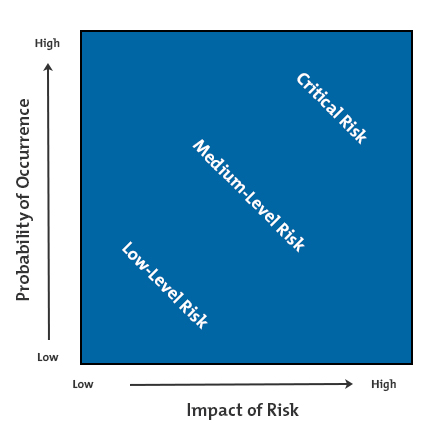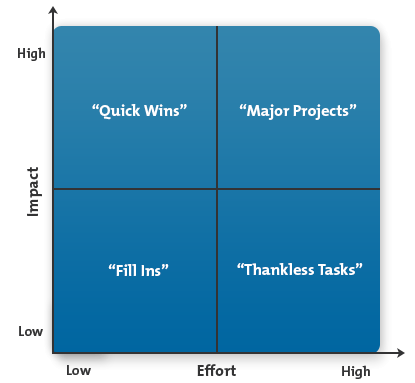Learn to Live Priorities
Unsuccessful people routinely act on useless emotional conflict, instead of logical needs. Their priorities are based on mood, not reason. This does not mean ignoring the emotional state of family and friends; on the contrary. These are indicators of needing to set logical priorities. Emotions are used as indicators of logical inconsistencies, NOT drivers in creating those inconsistencies.
Feeling like avoiding going to work may be an indicator to pay attention to, like changing logical needs, but it does NOT justify being late to work. Other people who share respect with you, depend upon you providing the services you agreed upon. Not honoring agreements earns you distrust, and significant future opportunities will be offered to others more worthy of respect (being trusted).
The tendency of young people is to think they will just get fired once, and they will just find another job. Who are they going to use as a reference that has the credentials to provide low-risk and significant “evidence” to support being offered a better job? The job experience as an unreliable employee, becomes a wasted step towards better opportunities.
KEY CONCEPT: Low-Risk and Significant Opportunities are only REPEATEDLY offered in-general to those that can provide evidence of representing low-risk and significant value in supporting the offered opportunity.
If you find it difficult to understand the following, you can go to your local college campus and ask to speak with almost any instructor (free) during their posted office hours on their office door. They will explain the following and give you examples for practiced experience. Instructors especially skilled in setting priorities are engineers, philosophers, and instructors of any technical program of study.
There are three (3) basic components in establishing priorities:
- Risk Assessment: Importance & Likeliness to Occur
- List the risks for each choice to be made
- Every Risk should be put in one of two containers; Spreadsheet Columns, or pieces of paper in buckets
- Contributing to Success
- Contributing to Failure
- … A quick method of making multiple copies of sets of risks for success and risks for failure, is to print them out on printer paper, and then copying them. As many as there are different goals (a few pennies per page); then cut them out with a paper shear at an office supply store (free). A spreadsheet is cheaper, and more organized, but some people may enjoy the tactile quality of throwing risk factors into buckets, emphasizing the differences and overall influences.
- Create a container for each of your goals
- Clone/Copy the containers of Success and Failure into each goal container
- The level likeliness to occur and the percentage of importance to the goal, will be different for each goal
- Adjacent columns in a spreadsheet, or adjacent numbers on each piece of paper in each set of goal containers
- contributors to success, and separately failure
- Rank Importance of each member separately for each of your goals (0 to 100 level of Importance)
- Rank Likeliness to Occur of each member separately for each of your goals (0 to 100% probability to occur)
- Multiply each member’s level of importance by it’s probability to occur
- For each Goal, order the Risks for Success and Risks for Failure, High to Low
- Low Risks of Success and Low Risks of Failure indicate members that as presently considered, has less need for change to achieve the Goal
- High Risks of Success and High Risks of Failure indicate members that unless managed will likely ensure failure
- Managing Risk Factors for each Goal broadly pushes efforts into the region of desired outcomes
- This establishes your personal Corporate Culture

- This establishes your personal Corporate Culture
- Importance vs Level of Effort
- Quick Wins are highest priority; getting them out of the way and having their results provide for future opportunities
- Major Projects need to be thoroughly planned and scheduled
- Fill-Ins and Thankless Tasks are Delegated if feasible
- As Urgency pushes priorities around, be sure to re-evaluate Importance and Urgency for each task. In actual effort, by eliminating urgency in developing tasks by getting them done early, re-evaluation of those tasks is unnecessary.

- Importance vs Urgency
see table below, based on combination of importance and urgency, each area determines how to set priorities
- Just Do It, Don’t Procrastinate; the risks are too high to put it off until the last minute. As is feasible, never let anything get into this area. But when it shows up because of poor planning or accident, get it done now. Thoughtfully.
- Schedule It. This is where all the useful productivity is supposed to reside. Time for Research and Development reduces the risk of being viewed as impulsive; or negligent.
- Delegate/Push Back. These are opportunities to negotiate for additional time, or additional resources; usually one or the other.
- Don’t Do It; use the time more effectively on higher priorities. Make sure you understand all the consequences to other goals before removing something from priorities. Not studying for an exam might provide more social opportunities, but it will likely heavily affect other goals like referral by your instructor related to potential high paying internship opportunities.
